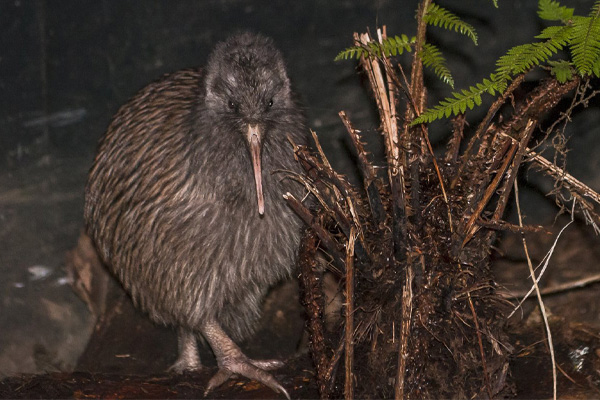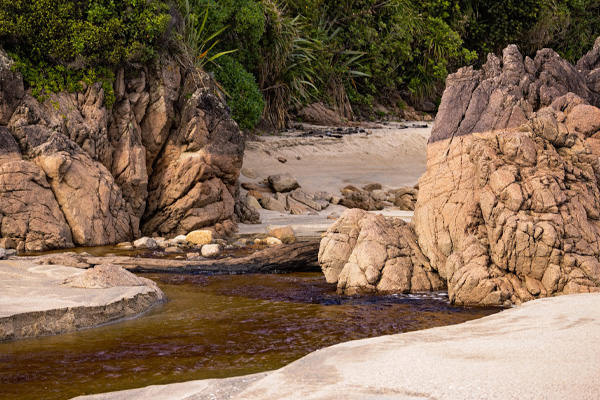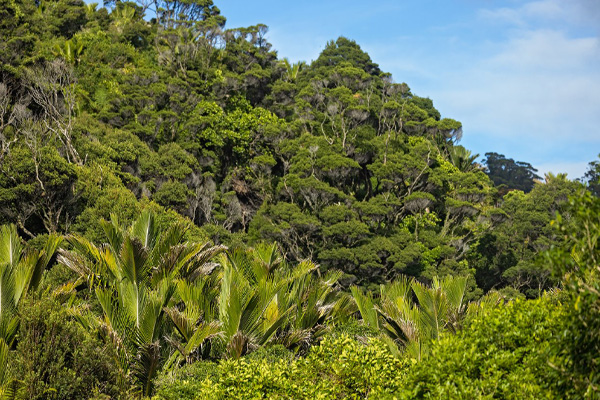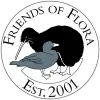Welcome to the Heaphy Track
The Heaphy Track is one of New Zealand’s designated Great Walks. Boasting exquisite diversity of flora and fauna over 80 kilometres, the Heaphy is home to over 80% of New Zealand’s native plant species. It’s the perfect adventure for someone looking to see a little bit of everything, featuring beaches, forests, rare birds and vegetation, as well as spectacular scenery.
Price
$2,200 NZD p/p
Fitness Level
Intermediate
Distance
+ 80km
Stay
Hut | Motel
Duration
6 Days
WALK Itinerary
Day 1
Motueka / Nelson to Perry Saddle Hut
Walking Distance
17 Km
We begin with a two-hour scenic drive from your accommodation in Motueka to the start of the track in the Aorere Valley in Golden Bay. The road takes us over the renowned Takaka Hill, also known as ‘Marble Mountain’ for its huge outcrops of limestone marble rock. We then travel down the beautiful Takaka Valley, through the township of the same name, then turn inland to the Aorere Valley.
The track commences at Brown River and climbs on a well graded track through lowland then podocarp-beech forest. We reach the highest point on the track (910 metres) approximately 40 minutes from our destination for the night – Perry Saddle Hut (a distance of 17 km – 6 hours). From the hut there are spectacular views of the distant saw-toothed Douglas Range and the Dragon’s Teeth. As we ascend the track you will be able to observe changes in the unique flora. Numerous bush birds – tui, bellbird, rifleman, tomtit and many more may venture out, curious of visitors.
When the bush peels away, you will be able to see the spectacular vistas from Flanagans Lookout at the highest point of the track and then again from the hut. There is also a chance to see two of our native parrots at the hut – the kea and kaka. At night the piercing cries of the great spotted kiwi can be heard.




Day 2
Perry Saddle Hut to Saxon Hut
Walking Distance
13 Km
An easy day of flat to undulating walking. A chance for the fitter walker to climb Mount Perry first thing in the morning for the spectacular views into the Aorere Valley, across the Gouland Downs and out to Tasman Bay (on a clear day Mount Taranaki in the North Island can be seen).
We hike through kamahi-beech-quintinia forest, then across the rolling tussock grasslands of the Gouland Downs – a peneplain. We stop at the historic Gouland Downs Hut for lunch, before entering the ‘Enchanted Forest’. This is a limestone remnant with moss dripping from the beech trees. We will be checking out some of the cave entrances in this lovely limestone outcrop.
On across the Downs, we walk through more magic forest with Dracophyllum traversii and D. townsonii. The rare endemic Bulbinella talbotii can be found on the Downs, along with the Pseudopanax lineris.
Our destination, Saxon Hut, is situated in tussock country. (A distance of 13 km – approx. 3 1/2 hours walking time, but we will be taking most of the day observing things along the way). Once again at night a chance to listen to the Great Spotted Kiwi.




Day 3
Saxon Hut to Mackay Hut
Walking Distance
12 Km
In the morning, we leave the Gouland Downs and the track crosses the serene Saxon River flats. As we wind our way up and over to the edge of the Mackay Downs, we pass an old pole marking the boundary between the Nelson and West Coast provinces. Welcome to the wild West Coast!
Arriving at the Mackay Hut for lunch we are rewarded with spectacular views of the distant Heaphy River mouth. A visit to the ‘tops’ above the hut is an afternoon option. Expansive and panoramic vistas around the mountains and out to the Tasman Sea may be viewed.




Day 4
Mackay Hut to Heaphy Hut
Walking Distance
22 Km
On the way to Lewis Shelter we encounter a different flora habitat once again, with the banks along the track covered with mosses and a huge diversity of other plants. The geology changes to granite country with wonderful outcrops. We descend to the Heaphy valley floor, as the track winds gradually down through ever changing forest with new species. Look out for the first nikau palms which begin to appear as we approach confluence of the Heaphy and Lewis Rivers.
We have a lunch stop at the Lewis Shelter, then cross both rivers to observe lowland rainforest flora and the striking limestone outcrops. There is little of this forest type left in New Zealand. We follow the river all the way to the mouth, arriving at Heaphy Hut. Keep a look out for some the largest Northern Rata trees in New Zealand.
Where do we start! The huge change in habitats and flora, the greatest change over the whole track occurs today, from the sub-alpine downs to veritable rain forest. The nikau, podocarp and giant northern rata forest will leave you breathless. Along with idyllic river scenes and, in season, the Earina and Winika perching orchids.
Spend the afternoon beachcombing on the driftwood-strewn shore and/or swimming in the large sandbar protected lagoon, just not in the surf! Maybe just a relaxing afternoon with a book before finally arriving at the chance to experience the famous Heaphy sunset.




Day 5
Heaphy Hut to Kohaihai
Walking Distance
16 Km
For the final day the track hugs the coast. We hike in and out of nikau and karaka groves beside pounding surf beaches and the best of wild West Coast scenery. Seabirds can be seen today and include the Cormorant, Oystercatchers and Gulls. We may even see a seal sunning itself on the rocks. Walking down the coastline we also have a chance to see our large native pigeon (the Kereru), especially when one of their favourite foods – the nikau berry – is ripe. We pass the iconic Scott’s Beach and ascend the Kohaihai Bluff before making our way down to the carpark, where our driver is waiting for us with our lunch.
We have a short drive to Karamea and spend our final night at The Last Resort where you will enjoy superior studio accommodation. We have a celebratory dinner (own cost) and get to experience real West Coast hospitality. The Last Resort restaurant has excellent regional cuisine, including their famous whitebait patties, a New Zealand native fish. This is a fun night of relaxation and laughter, full of camaraderie after spending five adventurous days together!




Day 6
Return to Motueka / Nelson
After breakfast at the Last Resort we will leave Karamea for the 5 hour scenic drive to Motueka or Nelson. This route will take you down the Northern West Coast to Westport, then through the picturesque Buller Gorge. We will be stopping en route at Murchison for lunch. Arrival time in Nelson will be approx. 3 to 3:30pm, so it is advisable not to book a flight out of Nelson until after 4:30pm in the event of unforeseen circumstances delaying our return.
There is an option to have your luggage (3-5kg) transferred to the Last Resort when you finish your walk. If you are continuing on down the West Coast after your Heaphy walk, we can drop you off in Westport if desired.




Pricing Information and Dates
More about the heaphy track
The Heaphy runs from Golden Bay in the North, to the township of Karamea on the West Coast. Its scenery and habitat range from sub-alpine tussock grasslands and mountain vistas through to lush jungle-like lowland forest and Nikau palm fringed beaches. One moment you are walking in dense New Zealand forest, only to find yourself on a sunny beach moments later.
Origin of The Heaphy
The Golden Bay Maori travelled via The Heaphy to the West Coast where they collected pounamu (Greenstone) to craft tools and weapons. Despite Maori usage, the track receives its name from Charles Heaphy, an explorer, artist and soldier who, along with Thomas Brunner and their Maori guides Kehu and Etau, were the first Europeans to explore the Heaphy coast. Interestingly, evidence of moa hunters dating back to the 13th century has been found at the Heaphy (Whakapouai) River mouth.
Wreathed in gold
Gold was discovered in 1853 in both the West Coast and Golden Bay, and the track was completed in 1864 to connect both coasts. With the end of the gold rush era, the well-graded track lapsed into disuse, except for the occasional tramper or hunter who wanted to experience the amazing tour of varied scenery and natural history.
Modern popularity
The Heaphy Track remained in obscurity for most of the 20th century until it was rediscovered in the 1960s, as tramping developed into a popular Kiwi pastime. The Forest Service promptly upgraded the track and built more huts and welcomed even greater numbers of trampers.
Flora and fauna
Kahurangi National Park has more plant species than any other park in New Zealand. During the last ice age the tussock grasslands (peneplains) of the park escaped glaciation and became refuges into which many of New Zealand’s alpine species colonised.
As the park is situated in the centre of New Zealand, it is also the southern or northern limit to many species. As if this weren’t enough to make it special, the Heaphy Track starts in lowland forest, climbs through a variety of habitats to a sub-alpine plateau and eventually finishes in coastal forest with the world’s most southern palm trees fringing its beaches.
There are many rare and endemic species along the track. All five species of Nothofagus (southern hemisphere beech) are found here. Huge podocarps and giant northern ratas are found in the lowland forest. On the Gouland Downs a huge variety of alpine and sub alpine species exist, including Celmisias (mountain daisy), Dracophyllums, Gentians, and Bulbinellas. Perching orchids, Astelias, mosses and spleenworts galore drip from the forest giants in the lowlands. When you reach the coast you will find Karaka, nikau and ngaio among other tree species.
Heaphy Fungi
There is a lot still to be discovered about New Zealand’s fungi, fanciers have much to enjoy along the Heaphy Track. New species are being discovered frequently. With its rich variety of habitats, there is no better place than the Heaphy Track to view the unique and strange New Zealand fungi.
Birdlife
Many of New Zealand’s rare and endangered species may be seen or heard on the Heaphy Track. Recently Takahe were released near Gouland Downs and signposts were erected to warn trampers of their presence.
As with the flora, the diverse habitats also mean a large variety of bird life. You can frequently see the Robin, Tomtit, Brown creeper, New Zealand Pigeon, Rifleman, Bellbird, Tui and Pipit. If you’e lucky you may find Kaka, Kakariki, Kea and Weka. Rare birds to watch out for include the Fernbird, Falcon and Blue duck. Moreporks are commonly audible at night. The nocturnal Great Spotted Kiwi is frequently heard but rarely seen as it cries in the evenings across the Gouland Downs and sometimes in the western lowlands. Common coastal sightings include Pied and Black Shags (cormorants), a variety of Gulls, Oystercatchers and Terns.
Additional fauna
Before the arrival of humans, especially Europeans, New Zealand was a land virtually without mammals. Introduced species, now regarded as pests, such as Deer, Goats, Possums and Stoats may occasionally be seen. Native Fur Seals take a rest on our shores. New Zealand’s giant Powelliphanta land snails are quite common and are worth looking out for. The largest of all New Zealand species is found on the Gouland Downs – Powelliphanta superba
If you’re lucky, you may even run into the North West Nelson giant weta.



